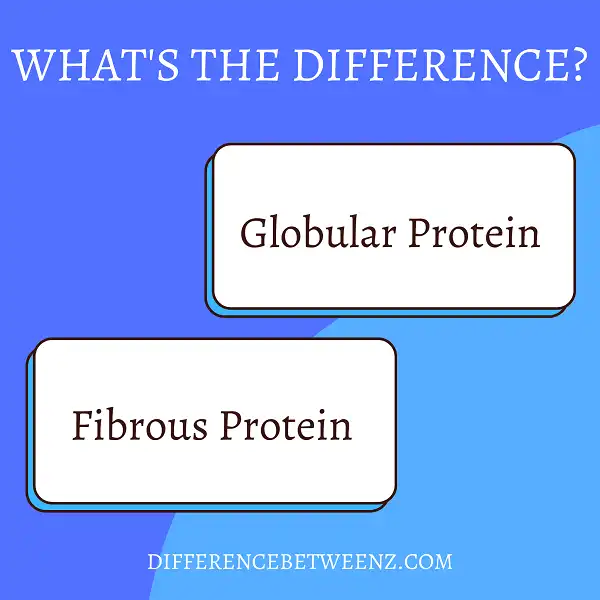There are two primary types of proteins: globular and fibrous. Globular proteins have a spherical shape, while fibrous proteins are long and thin. Each type has unique characteristics that make them suitable for different purposes. Globular proteins are generally soluble in water, while fibrous proteins are insoluble. Fibrous proteins are also strong and durable, making them ideal for structural purposes. Globular proteins, on the other hand, are often involved in biochemical processes. It is important to understand the differences between these two protein types to know which is most appropriate for a given situation.
What is Globular Protein?
Globular proteins are a type of protein molecule that are characterized by their spherical shape. They are typically found in soluble form in the cytoplasm of cells, and they often play important roles in cellular metabolism.
- Globular proteins can be further classified based on their subunit structure, with monomeric, dimeric, and multimeric proteins being the most common. Globular proteins typically have highly-organized tertiary and quaternary structures, which give them their characteristic shapes.
- These proteins are held together by a variety of different intra-molecular forces, including hydrophobic interactions, ionic interactions, and hydrogen bonds. Globular proteins perform a wide variety of functions within cells, ranging from serving as enzymes to binding to specific ligands.
- The spheres that make up these molecules can also be used to store and transport small molecules within cells. Globular proteins are an essential class of biomolecules that play vital roles in many cellular processes.
What is Fibrous Protein?
Fibrous proteins are a class of proteins that play important structural and functional roles in cells. Unlike globular proteins, which are typically soluble and have spherical shapes, fibrous proteins are insoluble and often have long, cylindrical shapes. Fibrous proteins can be found in the cell walls of plants, the extracellular matrix of animals, and the substrate layers of bacteria. They are also responsible for the strength and flexibility of hair, nails, and other tissues. Common examples of fibrous proteins include Collagen, Keratin, and Elastin. Fibrous proteins are generally resistant to degradation by enzymes, making them an ideal choice for long-term structural support.
Difference between Globular Protein and Fibrous Proteins
Globular proteins are water soluble and tend to be round or spherical in shape. Because of their solubility, they are found in cellular fluids such as blood and cytoplasm. Globular proteins perform a variety of functions within the cell, including enzymes, hormones, and antibodies. Many globular proteins are involved in metabolism, regulation, and signaling.
Fibrous proteins are insoluble in water and often have long, linear shapes. They are found in connective tissues such as tendons and ligaments, as well as in structural components of cells such as the cytoskeleton. Fibrous proteins play an important role in cell structure and function, as well as in locomotion (e.g. muscles). Examples of fibrous proteins include collagen, keratin, and elastin.
Conclusion
Globular proteins are soluble in water and fibrous proteins are insoluble. Fibrous proteins have a higher tensile strength than globular proteins. The two types of protein have different structures and functions in the body.


